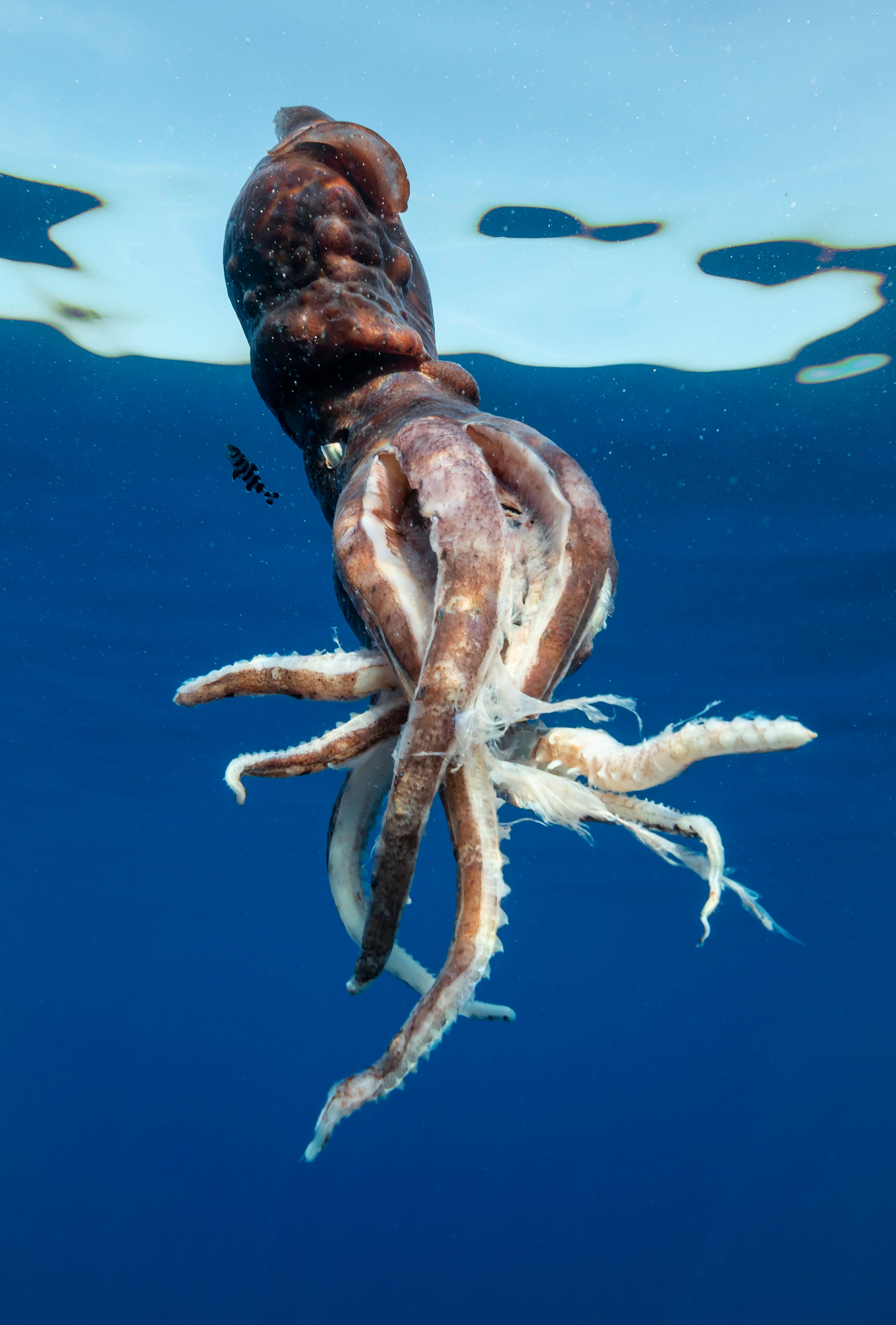
Videos of octopuses solving puzzles and escaping from jars have long fascinated people — from the safety of dry land, of course. But under the sea, octopuses’ deadly intelligence makes them one of the most terrifying predators on the ocean floor, especially for their fellow mollusks.
While an octopus and a clam belong to the same subphylum and inhabit the same environment, evolution favored the cephalopods when it came to brains. “No one really thinks of a snail as being something intelligent,” says Gareth Fee, a master’s student at the University of Cape Town. “But [octopuses] have developed this high level of intelligence.” Octopuses can even tell their different types of prey apart and can learn where their weak points are, according to a new study published earlier this year in Marine Biology and authored by Fee and others.
Octopuses drill holes in their prey to get through their defenses.
The researchers examined the empty shells of three species of octopus prey: an abalone, a kelp limpet, and a helmet snail. Octopuses drill holes in their prey to get through their defenses, and although these sea snails have different body shapes and internal anatomies, the holes consistently appeared in the same spots and lined up with key organs, a sign that the hunters were intentionally targeting their victim’s weak points.
The maneuver takes both skill and practice. Since its mouth is hidden underneath the rest of its body, the octopus has to rely on taste and touch to pin its struggling victim in the right position. It spits out an acid to help dissolve the shell and drills a hole using a toothy appendage called the salivary papilla before injecting a paralyzing venom that allows it to overpower its prey. Holes bored into ancient clamshells have shown that this behavior is at least 75 million years old.

After gorging itself on snail flesh, the hunter piles the empty shells in heaps called middens. “Octopuses are quite messy eaters,” says Fee. The researchers collected shells from octopus dens at the bottom of False Bay and recorded the location of the drill holes on each shell. They studied a total of 179 shells, including some collected in previous years by Craig Foster, creator, and star of the film My Octopus Teacher.
The researchers had previously dissected live specimens of each mollusk to map out the internal organs that were located under each section of the shell. By comparing the proportion of holes clustered over a particular organ to the proportion of the total area taken up by that section, they could measure the likelihood that the octopus was targeting that organ.
It spits out an acid to help dissolve the shell and drills a hole using a toothy appendage called the salivary papilla before injecting a paralyzing venom that allows it to overpower its prey. Holes bored into ancient clamshells have shown that this behavior is at least 75 million years old.
For example, holes near the kelp limpet’s adductor muscle — which attaches the snail to its shell — were found about four and a half times more often than would be expected if the octopuses were poking around at random. Fee and his coauthors had predicted as much: To stun a snail, “the quickest and best way is to drill directly into the muscle,” he says.
Limpets and abalone look similar on the outside — both snails have a relatively flat oval shell, unlike the more spherical shell of the helmet snail — but their internal anatomy is different in important ways. The abalone has a large circular muscle in the direct center of its shell, while the limpet has a thin, horseshoe-shaped muscle. Since the limpet’s muscle is a harder target to hit, the octopuses often missed it. But the high precision of the holes suggested they knew where the target was.
The holes in the helmet snail showed the highest precision: tightly clustered in one spot just beside the tip of the spiral. The octopuses were clearly targeting this area, but strangely, the holes didn’t appear to line up with any particularly important organs or muscles. Fee and his coauthors speculated that the octopus might have developed a strategy that works for killing two different species: helmet snails and the hermit crabs that live in their empty shells. The target could be a spot that works for immobilizing both the crab and the snail.
Octopuses prey on animals with hard shells, like crabs, snails, and clams. “Having a puzzle to open up to get food inside is a daily task for them,” says Kirt Onthank, a biologist at Walla Walla University who studies octopus behavior. So we shouldn’t be surprised that they have a knack for opening jars in the lab. But that skill only comes with practice. “An octopus’s mom never taught them how to do any of this. They had to learn on their own.” Onthank was not involved in the new study.
Recent proposals to farm octopus have drawn sharp criticism from animal welfare advocates. Unlike cows, octopuses aren’t used to living in herds — they’re solitary and territorial. Octopuses are also carnivores, which means they would likely need to be fed a diet of wild fish like menhaden and anchovies, which are important food for people and marine life alike. But opponents also argue that it would be cruel to confine such an intelligent creature to the monotonous life of a farm animal.
It’s clear that octopuses are smart, but researchers are still debating what “intelligence” means for an animal with a mind so alien to that of humans. “Even though we have lots of interesting ways in which we can poke at octopus intelligence and try to tell things about it, at the end of the day, it's incredibly hard for us to know what it's like inside the head of an octopus,” says Onthank. “Their brains are fundamentally organized so differently than ours.”







